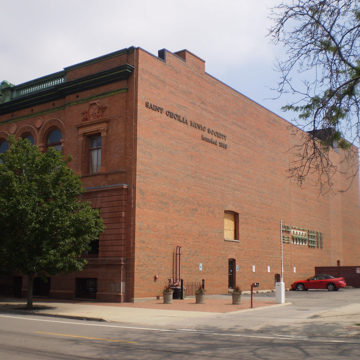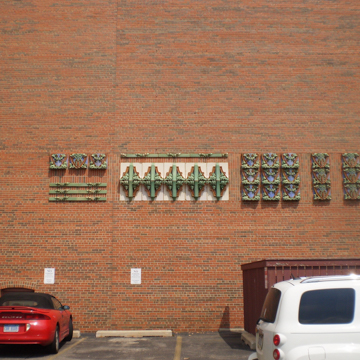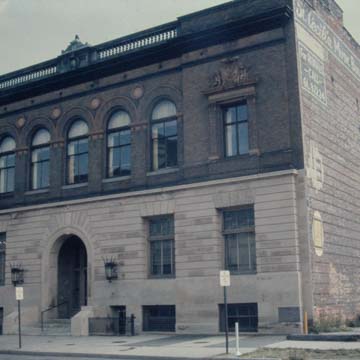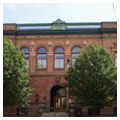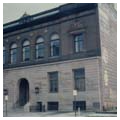You are here
St. Cecilia Music Center
Nine women led by Ella Matthews Peirce founded in 1883 the St. Cecilia Society for the purpose of advancing the musical arts in Grand Rapids. Named after the patron saint of music and musicians, the society claims to be the first women's music club in the country to erect and maintain its own recital hall. The hall was designed by Cobb of Chicago in the formal and dignified Beaux-Arts classical style. The facade of the brick-clad music hall has a penciled masonry base, with an arched entranceway with heavy voussoirs. Five round-arched windows repeat the entrance motif and a balustraded cornice completes its formalism. The terra-cotta cartouches in the spandrels contain a horn, a cello, a triangle, and pipes. A large foyer opens to the 695-seat auditorium originally lit with a golden glow filtered through skylights, and a grand staircase leads to the second-floor dance hall. A memorial window to Emma Lyon Withey Greeson, a pianist and early member of the society, at the staircase landing was executed by Tiffany Studios from a design by New York artist Frederick Stuart Church, who was a native of Grand Rapids. It shows St. Cecilia seated at the organ under the protection of two guardian angels, one of whom holds a lyre. The interior of the auditorium was remodeled and its acoustics improved in 1926 by Rindge and Rindge of Grand Rapids. Continuous use of the building has enhanced the cultural life of the city and West Michigan. Renovation of Royce Auditorium and restoration of the west exterior facade were completed in 1998.
Writing Credits
If SAH Archipedia has been useful to you, please consider supporting it.
SAH Archipedia tells the story of the United States through its buildings, landscapes, and cities. This freely available resource empowers the public with authoritative knowledge that deepens their understanding and appreciation of the built environment. But the Society of Architectural Historians, which created SAH Archipedia with University of Virginia Press, needs your support to maintain the high-caliber research, writing, photography, cartography, editing, design, and programming that make SAH Archipedia a trusted online resource available to all who value the history of place, heritage tourism, and learning.















